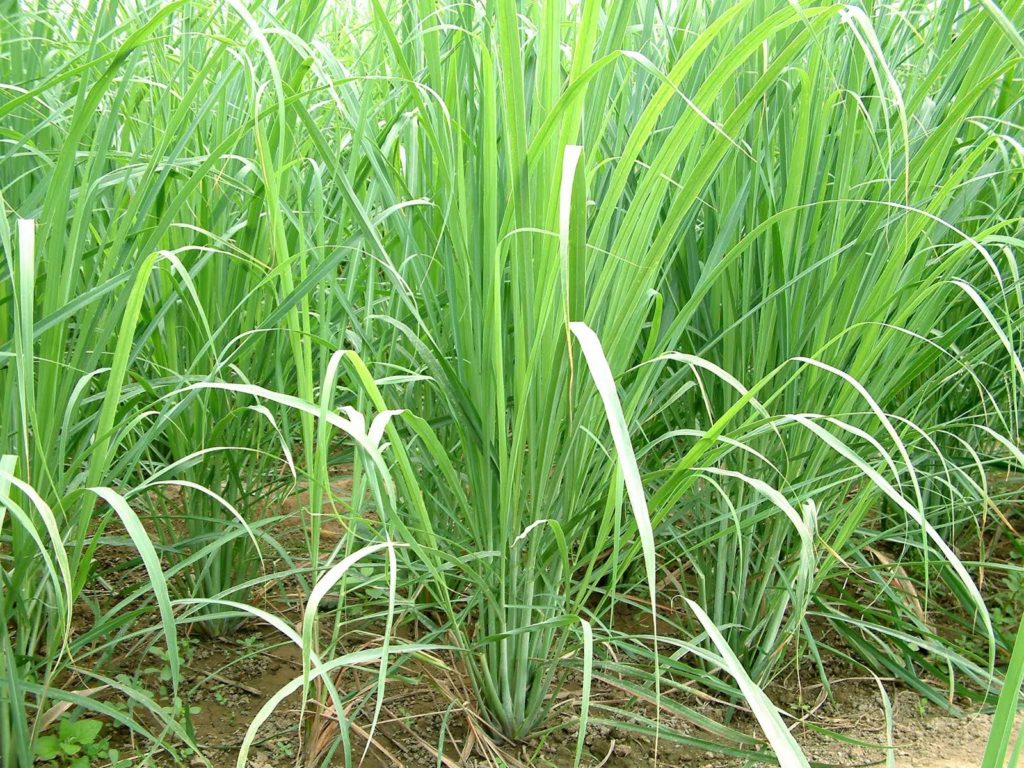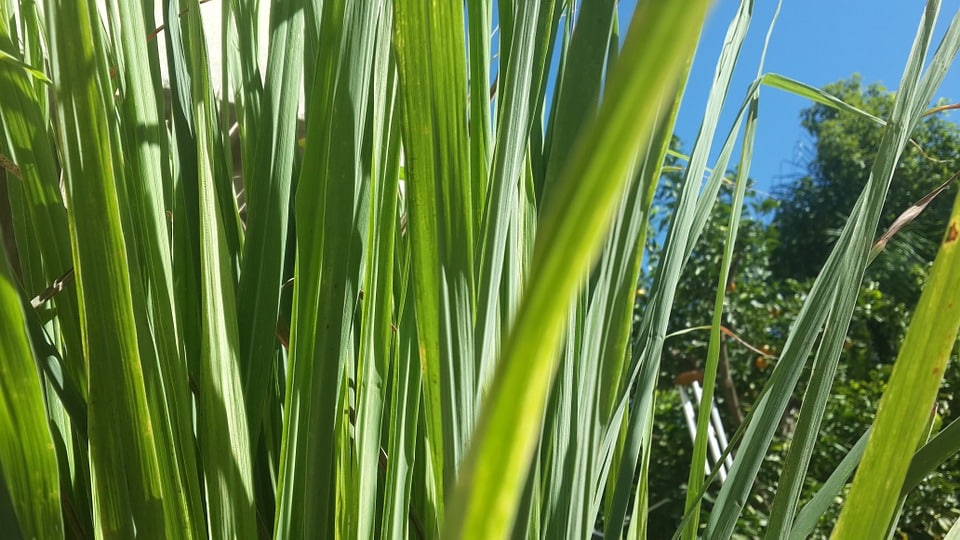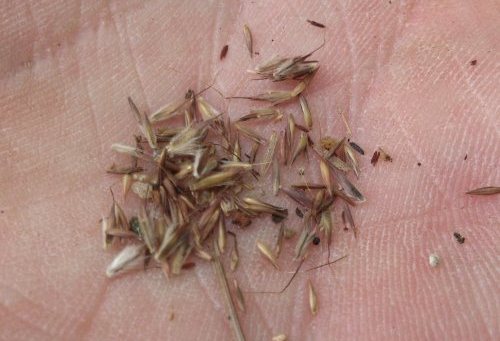Lemon Grass Farming Information:
Today we learn step by step guide of growing Lemon Grass from seeds, transplants. The commercial farming of Lemon Grass is rapidly increasing because of high demand. The commercial cultivation of Lemon Grass is very easy just like any other grass crop.

Introduction of Lemon Grass:
Lemongrass is a perennial plant with thin and long leaves and it is indigenous to India and other areas. Lemongrass is one of the commercially cultivated aromatic crops in India. It belongs to the family of Poaceae and grows in many parts of tropical and sub-tropical Africa & South East Asia. It is mainly grown in India along Western Ghats (Kerala, Maharashtra), Tamilnadu, Up, Assam and Karnataka besides foot-hills of Sikkim and Arunachal Pradesh. Lemon Grass has a lot of medicinal properties and health benefits. It can be used in regular tea consumption for a best aromatic flavor.
Economic Importance of Lemon Grass:
Lemon Grass oil is distilled from its leaves and flowering tops. The oil has a strong lemon like a smell, due to high % of citral in the oil. This citral smell of oil makes its use in herbal products, detergents, scented soaps, and insect repellent making. The major use of Lemon Grass oil is as a source of citral, which will be used in the perfumery, cosmetics, and beverages.
Health Benefits of Lemon Grass:

Some of the health benefits of Lemon Grass are listed below.
- Lemon Grass has full of Anti-Cancer Properties.
- Lemon Grass oil is used in aromatherapy for muscle pain.
- Lemon Grass helps to cope with fever.
- Lemon Grass helps to cope with the cold & cough.
- Lemon Grass has cholesterol-lowering properties.
- Lemon Grass helps to cope with stress.
- Lemon Grass helps in dealing with high blood pressure.
- Lemon Grass cleanse the body by eliminating toxic substances.
- Lemon Grass cleanses kidney, pancreas, liver, bladder, etc.
- Lemon Grass to improve the digestive system tract.
- Lemon Grass helps to deal with menstrual problems.
- Lemon Grass aid to cope with acne and pimples.
Local Names of Lemon Grass in India:
Nimma Gaddi (Telugu), Elumichai-Ennai Pullu (Tamil), Nimbe hullu (Kannada), Cochin Grass or Malabar Grassor or Vasana Pullu ( Malayalam), Gavati Chaha (Marathi), Gandhatrina (Hindi), and Lilicha (Gujarati).
Commercial Varieties of Lemon Grass:
Below listed are some of the commercial varieties of Lemon Grass.
Sugandhi, Praman, PRL-16, CKP-25, OD-408, RRL-39, Pragathi, and Kaveri.
Growing Potential Belts of Lemon Grass:
Lemon Grass is widely grown in Kerala, Tamil Nadu, Karnataka, In the southern region, parts of UP and Assam in the north-eastern region and Uttaranchal in the northern region. At present, East Indian lemongrass is mainly grown in the western part of India.
The climate required for growing the Lemon Grass:
Lemon Grass needs a warm humid climatic condition with full of sunshine and rainfall ranging from 200 t0 250 cm well distributed throughout the year. Lemon Grass can be grown in a place where rainfall is less provided there is an alternate irrigation system.
Soil requirement for Lemon Grass plantation:
Lemon Grass thrives well in a wide range of soils ranging from rich loamy to poor laterite. But sandy loam soil and red soils with good drainage and good organic matter are best suited for its cultivation. Waterlogged soils should not be considered for its cultivation.
The seed rate of Lemon Grass:
The seed rate in Lemon Grass farming is 2.5 kg per one hectare.
You may also like Solar Subsidy, Loan Schemes for Rooftop and Agriculture.
Propagation of Lemon Grass:
The Lemon Grass crop is best propagated through seeds raised in nurseries, 2.5 to 3 kg of the fresh seed produces seedling for plantation one hectare of land. It can also vegetatively propagated by splitting the clumps into slips. These are planted @ by keeping space 60 cm x 80 cm. Around 25,000 slips are needed for one hectare of the plantation.

Land Preparation for Lemon Grass sowing:
Prepare the land by digging or plowing followed by levelling. Then shallow trenches of width 30 cm to 35 cm should be made 30 cm apart. Well-rotten Farm Yard Manure should be mixed with soil in the trenches. Transplant 20 to 30 day old Lemon Grass seedlings in the shallow trenches @ a distance of 20 cm in 2 rows. During rainy season planting should be done on raised beds.
You may be interested in Vetiver Farming, Cultivation Practices.
Manure and Fertilizers of Lemon Grass crop:
| S.No | Items/Materials | Chemicals | Per Acre | Per Hectare |
| 1 | No.Of Slips | 10,000 | 25,000 | |
| 2 | Farm Yard Manure (FMY) | 4 Ton | 10 Ton | |
| 3 | Fertilizers | N P2O5 K2O |
200 Kg
40 Kg 50 Kg |
450 Kg 100 Kg 125 Kg |
Plantation Procedure of Lemon Grass:

Plantation of Lemon Grass should be carried in the last week of May month or in the first week of June. Before planting of Lemon Grass, the main field is thoroughly prepared and laid out into 6 m x 6 m size beds. The soil should be supplemented with a full dose of potash and phosphorus. Under irrigated conditions, Lemongrass planting should be done during any part of the year, except October-November months. Nitrogen is applied in 6 equal split doses, the first dose should be at the time of Planting, another after 4 weeks and the remaining after each harvest. Slips should be prepared by clipping all the old roots and removing the leaves completely for planting and ridges are opened at 60 cm distance.T hey are then should be planted at about halfway down the slopes of the ridges @ a spacing of 60 x 60 cm.
The water requirement for Lemon Grass crop:
Plots should be watered every alternate day for about 4 weeks and then once a week depending upon weather and soil type. In the rainy season, irrigation is not needed and the soil should have proper drainage.
How to control weeds in Lemon Grass crop:
The main field is kept weed-free for the first 3 to 4 months after plating the Lemon Grass. Similarly, weeding cum hoeing is done up to 4 weeks, after every harvest. Generally, 2 to 3 weedings are required during a year. In row-planted crops, inter-culture operations should be done by hand-hoe or a tractor-drawn cultivator.
Pests and Diseases of Lemon Grass:
No serious insect diseases and pests have been reported to attack this Lemon Grass crop.
Harvesting and the yield of Lemon Grass:
The Lemon Grass plants are perennial & can give crop up to Five years. Harvesting can be done by cutting the grass 10 cm above ground level. During the 1st year of planting 30 cuttings and in subsequent years 5 – 6 cuttings are obtained. The first harvesting is done in about 3 months after planting and subsequently at 45 to 60 days intervals. The harvested leaves can be stored under shade for 3 days without much adverse effect on the oil yield or quality of the oil. They are then chopped into smaller pieces before distillation. We may expect to obtain an herbage yield of 15 ton per harvest and recovery of 0.5% oil from fresh Lemon Grass. The yield of oil from 2nd year onwards would be around 400 kg per hectare. Yield may depend on the variety of seed and crop management.
Some facts about growing Lemongrass.
You may also check Growing Onions from Sets, Seeds.
- The lemongrass (Cymbopogon citratus) is a perennial, however, it is winter hardy and very much sensitive to frost conditions.
- The first harvest of lemongrass can be expected after 4 months of planting.
- Lemongrass is recommended to plant after the frost is passed.
- Usually, lemongrass will become dormant in cold conditions like cold winters.
- Lemongrass can be grown in pots in the home garden.
- Lemongrass requires full sun or partial shade and prefers warm, humid conditions.
- For lemongrass stalks to grow new roots, you can keep them in the water (like in a Jar with an inch of water). Expect new roots after 15 to 20 days before you transplant them.
- Lemongrass can be grown indoors, in the backyard, on the terrace even in the balcony.
That all folks about techniques of Lemon Grass farming, ideas, and tips.
I have fertile land of about 50 acres in Dar es Salaam Tanzania, East Africa and woud like to do Lemongrass Farming.
Looking for any interested party who can join hands in any stage starting from farming, Harvesting, Oil extracting, marketing etc
do u have poly house so i can help u out with this
Yes, but which country you want to do farming.Ican join at any satage but what is terms and conditions.
Yes I am interested about it.
Can lemon grass farming is suitable in Rajasthan?
If you have well-drained sandy loam soil, Lemon grass can be grown without any issue.
What’s the yield per Acer and cost per kg
Hello,
I am interested in the Lemongrass farming with contract base for buying.
Hi,
I am interested in lemongrass farming with a contract base for buying.
How much rate you buy of one litre of lemon grass oil? And tell me your details means address.
How much cost of lemongrass oil per Kg, If you purchase.
Can we grow in Red soil, what is the yield per acer and what will be the crop duration
Yes, soil should be nutrient rich in order to get food oil content.
HM Herbals is big player in Lemograss. I met them at international expo in gujarat . they even make variety of products using Lemongrass. they do contrat farming as well
yes
Where can i get Lemon Grass seeds in AP/telangana? Any reliable Online shops/Nurseries that sells the seeds ?Thanks
I would like to know lemon grass (Raw material) price details pls
Thanks in advance
Where to sell the lemon grass after harvesting ?
I like this, when can I start planting the lemongrass in South Africa?
I want to know how to multiply leman grass plants
I want to cultivate lemongrass in Hooghly district, west bengal. Is there any contract farming company to help me?
I want to cultivate lemon grass in ujjain district Madhya Pradesh please guide me for that or contact me through email as soon as possible